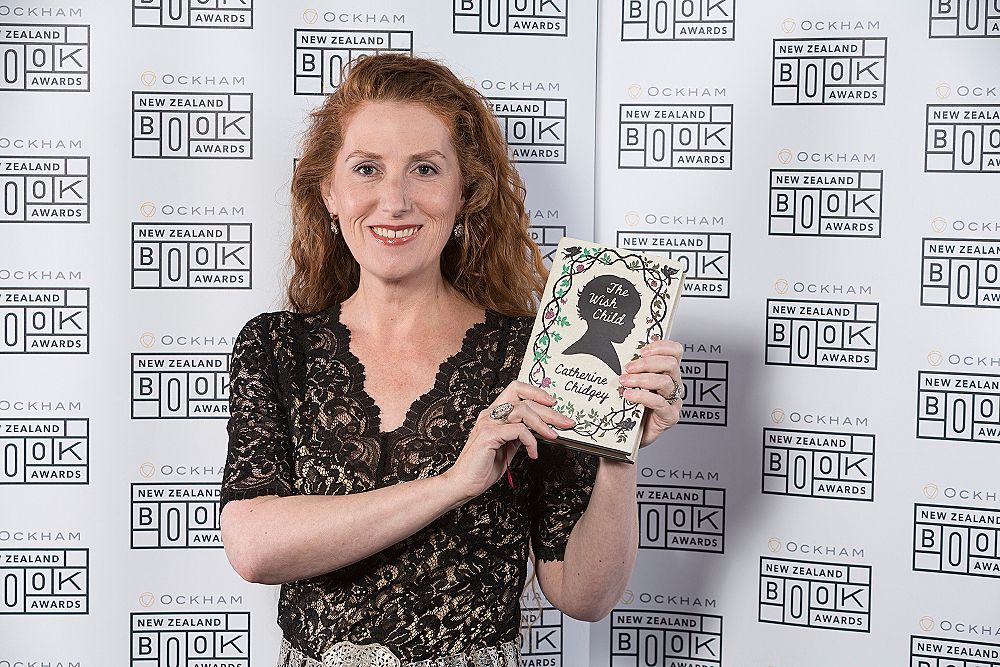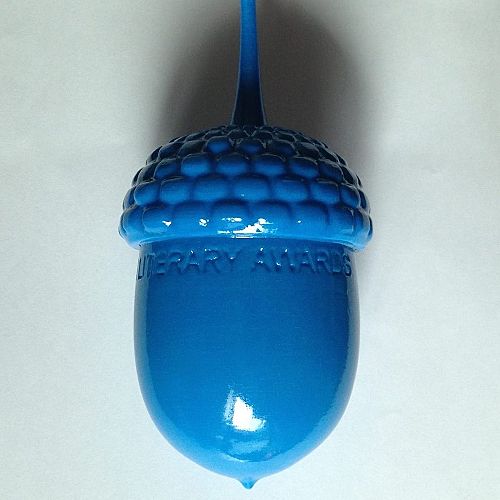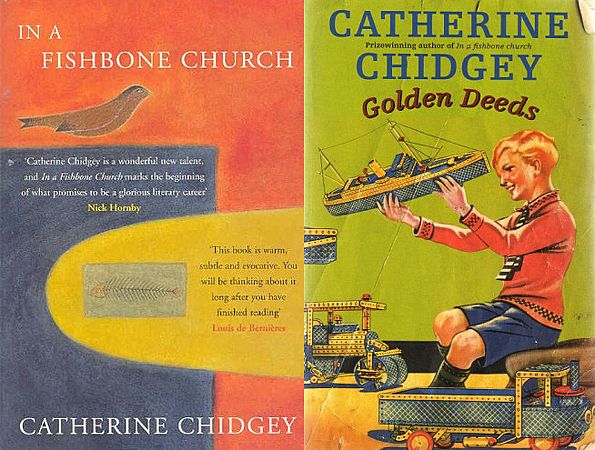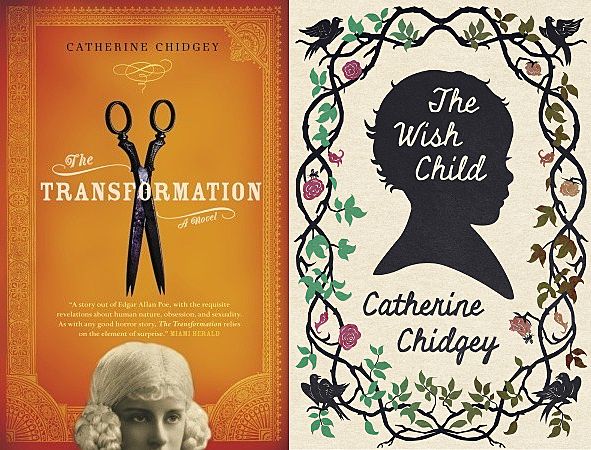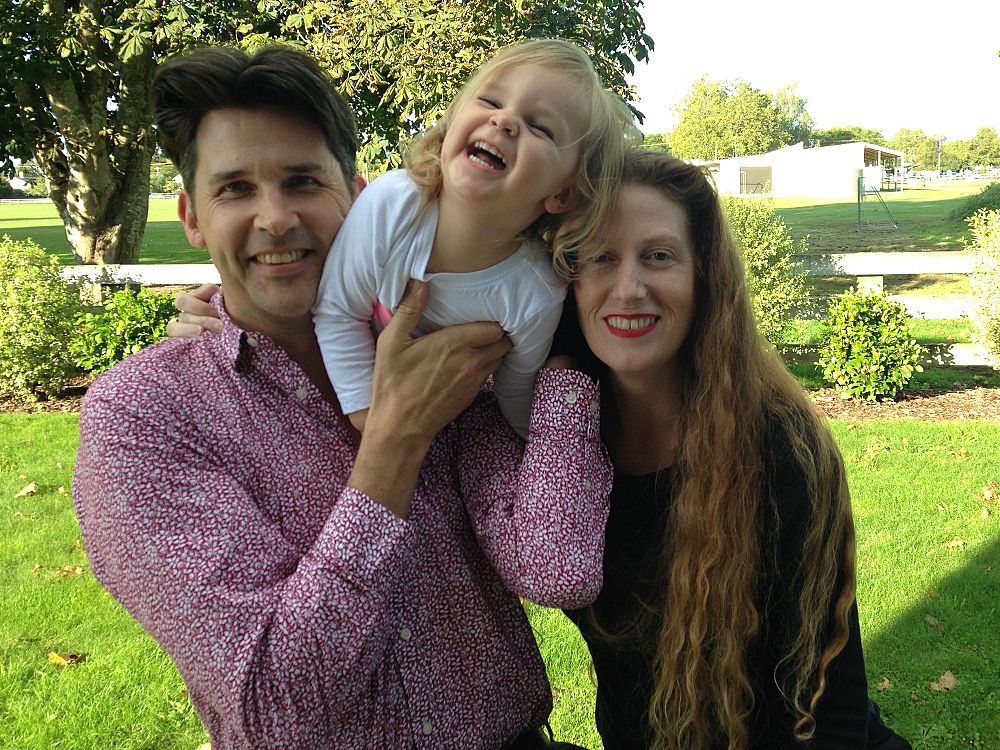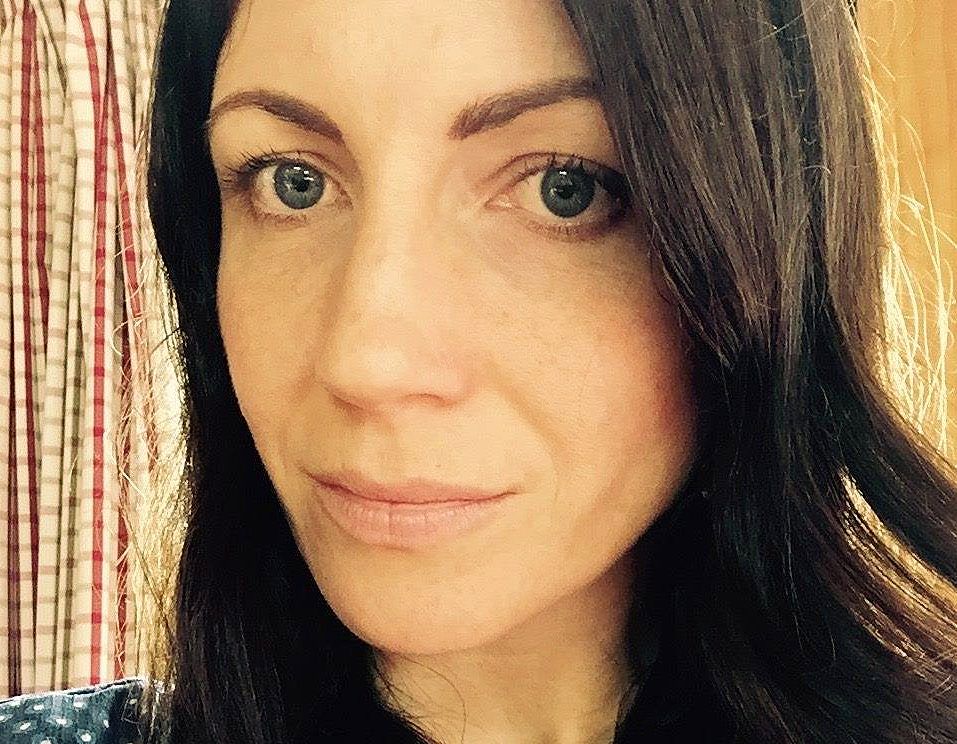A Year Found: A conversation with Catherine Chidgey
Books Editor Sarah Jane Barnett talked to Catherine Chidgey about her big win, being a working mum, and her forthcoming novel The Beat of The Pendulum.
Catherine Chidgey: Ngāruawāhia resident, antique bag collector, and the owner of five, pure-white rescue cats. She’s also the celebrated author of four novels, most recently The Wish Child which won the coveted $50,000 Acorn Foundation Fiction Prize at the 2017 Ockham Book Awards. Books Editor Sarah Jane Barnett talked to Chidgey about her big win, being a working mum, and her forthcoming novel The Beat of The Pendulum.
Sarah Jane Barnett: First, congratulations on winning the $50,000 Acorn Foundation Fiction prize for The Wish Child! There was no doubt in my mind you would win – I cried an almost embarrassing amount at the end of your book. Did you feel optimistic on awards night? Writing The Wish Child took thirteen years and was a long creative and personal journey. How did you feel in the first quiet moment after winning the award?
Catherine Chidgey: I felt very nervous on awards night. The fiction prize is the last one announced, so I had plenty of time to concentrate on the large fern at the side of the stage and telepathically convince it to help me win. (Still not really sure how that works.) I’d written a speech that afternoon, in case things went my way, and I was torn between shoving it to the bottom of my bag where nobody could see it, and keeping it within easy reach should I need to grab it in a hurry. I ended up making a couple of last-minute changes to it while the other prizes were being announced, painfully aware that the people sitting around me could see I was making last-minute changes. Ohhhh, she thinks she’s going to win.
Immediately after the ceremony I did some TV and radio interviews, in which I tried and failed to think of different answers to the same question, and later we went out for drinks with the VUP crowd and their embarrassment of riches. I wish I could say I guzzled from a champagne fountain into which I launched my bright blue acorn trophy to see if it would float, but due to crushingly dull allergies, I restricted myself to water.
It felt bloody fantastic to be returning to my hotel room with the acorn trophy. I hadn’t let it out of my sight all evening.
VUP publicist Kirsten McDougall, who would make an excellent adored-but-stern kindy teacher in another life, excused herself from the table at one point, and some drunk guy joined us. In my memory he is wearing a short-sleeved business shirt with a tie, and is called Tony. At first we all assumed he was part of our group; Ashleigh Young’s ebullient uncle, perhaps, or Hera Lindsay Bird’s dad. At his lurching request we went round the circle one by one and told him our names, and as he slurred questions at us I began to feel I’d slipped through a gap in the space-time continuum and landed back in 1988 at the Angus Inn in Lower Hutt. Fortunately Kirsten returned, assessed the situation with one steely glance, then told Tony he was in her seat and needed to go away.
Despite the lack of champagne, it felt bloody fantastic to be returning to my hotel room with the acorn trophy. I hadn’t let it out of my sight all evening. It took me a long time to wind down; I climbed into bed, realised I could still see the red light on the TV, got up and covered the red light on the TV, realised I could still see the white light on my laptop, got up and covered the white light on my laptop, realised I could still see the blue numbers on the clock radio, shoved a pillow over the clock radio… But I put the blue acorn next to my bed, where it would be the first thing I saw when I woke up. And it was.
Sarah: Is the blue acorn still by your bed? I think I'd keep it close! The Beat of The Pendulum, your new novel, comes out in November. I've heard the novel began because you wanted to see if you could write a ‘found’ novel – that is, a novel comprised of only found text. Tell us about the process of writing this book. How did you go about finding material? Is everything found?
Catherine: I need to keep the blue acorn well away from unpredictably violent toddlers and cats, so it’s now displayed in our living room, on top of an art deco dumb waiter that used to belong to Justice Peter ‘orchestrated litany of lies’ Mahon.
Yes, I’d been talking to my students about found poetry, and decided I wanted to try writing a found novel. The passage of time had been on my mind – because somehow I had landed in my mid-forties, because my mother was in her mid-eighties, because I’d spent so much time writing The Wish Child and so much time trying to have a child of my own…it seemed that all of a sudden life was galloping past. I wanted to write something that reflected on that rush of time; on the way we perceive it and try to make sense of it, and on our attempts to grasp at and preserve little fragments of our lives as they whip by. Last year seemed the perfect period to cover in the book; my daughter was turning one, and was just beginning to use language and acquire memories, while my mother was turning eighty-five and beginning to lose those faculties due to dementia – and I stood in between the two of them.
I wanted to let it find me, so that the book would be a true reflection of those random moments... that offer themselves to us every day, but are gone before we know it.
So, for every day of 2016 I had to produce a piece of writing drawn from something I encountered that day. My raw material was newspaper articles, Facebook posts, emails, radio broadcasts, books I was reading, street signs, notes I came across that I don’t remember writing to myself – terrible ideas for short stories, for instance. I also drew on conversations – ones overheard, or ones recorded with my friends, family, students, osteopath… Every day I transcribed this material, then crafted it into the entry for that day. The rules were that I could take out any words I wanted, and I could repeat words, and shift them around however I liked, but I couldn’t add anything. Sometimes the final piece of writing is quite close to the original source – some of the conversations with my mother, for instance – and sometimes it’s unrecognisable, and closer to prose poetry. Sometimes the character called Catherine Chidgey is basically myself, and other times she’s fictional.
I think of the book as a kind of echo of a year – the traces left behind after that time has passed – almost like the memory of a dream. Every word in the novel is found, but I tried not to go in search of material; I wanted to let it find me, so that the book would be a true reflection of those random moments of beauty and frustration and comedy and strangeness that offer themselves to us every day, but are gone before we know it.
Sarah: There’s an addictive quality to The Beat of The Pendulum. I felt I was eavesdropping on private conversations - it felt intimate. At the same time, eavesdropping by its nature means I’m at a remove, and there’s a sense of anonymity. The play between intimacy and anonymity reminds me of the narrator of The Wish Child. Are these themes that you purposefully explore?
Catherine: I hadn’t thought about the similarities with the narrator of The Wish Child, but you’re absolutely right. Often I’m not aware of themes common to my work until after I’ve finished a piece, and then sometimes I’ll have a moment of realisation (or a perceptive reader/interviewer will point it out!), and I’ll think – ah yes, of course – that’s why I was drawn to tell this particular story in this particular way. I’m glad that sense of eavesdropping comes through for you. I’ve made the reader party to many private moments of my own, but sometimes I’m the one eavesdropping; I’ll offer snatches of conversations overheard at the mall or the supermarket, for instance, or I’ll remind someone that I’m recording them if we seem to be straying into questionable territory. I like the thought that in these sections the reader is eavesdropping on an eavesdropper. (And of course, secretly I was thrilled if we strayed into questionable territory.)
Our lives are both intimate and distant.
Our lives are both intimate and distant. I’m thinking here about the sections of the book that are drawn from Facebook posts, or emails, or texts, or internet forums – there are so many methods of connecting instantly with another person, and yet those very methods of connection nudge us more and more towards solitude.
I read a lot of Angela Carter, Marina Warner, Margaret Atwood and Janet Frame in my formative years, and lived on Grimm’s fairy tales as a child; probably those early influences show in my voice and in my concerns, though again, it’s not something I’m consciously aware of as I’m writing.
Sarah: We seem to be part of a time in human history when intimacy and connection happen in new, digitally mediated ways. This conversation for example, which outside of the formal interview has strayed into topics such as kids and teaching. Teaching is an important part of my writing life, partially because it’s a steady income, but also because connecting with students inspires and invigorates me. As you noted, the idea for your new novel was sparked from talking to your students. In what other ways does teaching support your writing life? Would you recommend it as a profession for writers?
Catherine: Teaching means that I keep engaging with and thinking about the value and the limitations and the possibilities of those basic tenets of creative writing – focus on the sensory and the concrete, for instance, or write what you know. I talk with my students a lot about ways to overcome the internal censor – that cruel little voice that is always telling you your work’s not good enough, not original, not worth finishing. When I have those conversations with my students, I’m reminded to take my own advice – to ignore that voice, shut it out of the room, at least while you’re getting down a first draft. And I need to be reminded of that. Writing is like a 12-step programme – you have to keep hearing how to do it successfully, how others have done it, in order to proceed with your own recovery!
One of the best things about being a teacher is that thrill you get when a student’s work really starts to sing... when you’re sitting in the classroom and listening to them read and thinking: I wish I’d written that.
One of the best things about being a teacher is that thrill you get when a student’s work really starts to sing – when you know that that person will go on to be published – when you’re sitting in the classroom and listening to them read and thinking: I wish I’d written that. One of the worst is that I live a long way away from one of my jobs, so I spend many hours a week in rush-hour traffic, crawling to or from Auckland. Sometimes that can be a time and space in which I solve writing problems, though – an idea or a solution will come to me, but I can’t write it down, so I’ll spend the next hour repeating it to myself so that I don’t forget it. She’s an archivist! She’s an archivist! I tell myself that the people in the cars next to me will think I’m just singing…
I would recommend teaching as a profession for writers, yes; it keeps you plugged into that heady excitement that consumes new writers. And you can ask them what young folk are saying these days instead of by jingo or daddy-o, so you don’t completely fossilise.
Sarah: As a woman, mother and writer I like to ask other women who are mothers and writers how they navigate the emotional demands of motherhood and of writing? I experience it as a constant seesaw between the interior world of writing and the exterior world and needs of my child. How’s it going for you?
Catherine: It is a seesaw. And a juggling act. It’s a juggling act on a seesaw. I think there’s an egg-and-spoon race in there somewhere too. My daughter goes to daycare, and outside of that my husband, who works from home, does the lion’s share of the childcare. It’s hard to explain to a two-year-old, though, that Mummy is just about on the verge of catching the tail of a sentence she’s been coaxing all morning, and stopping to plait some blobs of Play-Doh into a bracelet will scare it off for good. So I tend to stop and see to the Play-Doh. And then kick myself for stopping and seeing to the Play-Doh. Or, if I don’t stop and see to the Play-Doh, flagellate myself for ignoring my daughter in favour of my work, and providing her with more material for a tell-all memoir.
Sarah: Your husband, Alan Bekhuis, is a world expert in daguerreotypes (an early method of photography that produces positives on silvered copper plates), which he calls ‘laborious, intricate and prone to failure of intention.’ That sounds a lot like writing to me. I remember Richard Ford talking about how he reads his first drafts to his wife, and that she’s his first editor. Do you and Alan have a creative partnership?
Catherine: We are both obsessive perfectionists when it comes to our work, and both processes demand a certain bloody-mindedness – an ability to shut out all distractions (apart from the occasional Play-Doh bracelet) and focus on the work and only the work. I don’t know if we have a creative partnership so much as a finely honed sense for when the other is not to be disturbed. I ate most of my meal alone at our wedding reception, for instance, because Alan had to develop the daguerreotype he’d just taken of us. I am entranced by the almost magical process of daguerreotypy, and have started writing a novel about it, which may see the light of day a couple of books down the track.
Alan looms large in The Beat of the Pendulum – many of the conversations in the book are versions of conversations I had with him – and I am enormously grateful to him for not only letting me record him all year long, but then letting me doctor and publish a lot of that material. There’s a moment in the entry for 31 December when he expresses relief that the novel is almost over…I suspect he’s had all the creative partnership he needs for quite some time.
I’m hooked on the rush I feel when I finish a piece... there’s nothing like it. Nothing.
Sarah: Finally, what drives you? The detail of The Wish Child shows a scrupulous researcher, and the exhausting process of writing a found novel shows discipline. In some interviews you’ve said that the thirteen year break between book three and four drives you, but what else? I suppose I’m asking, why do you write? There is of course never one reason, but what keeps you returning to the page?
Catherine: I can’t not write. I’m hooked on the rush I feel when I finish a piece that I think is good (a novel, a chapter, a paragraph, a sentence) – there’s nothing like it. Nothing.
The Wish Child is available from Victoria University Press. The Beat of the Pendulum will be published in November, 2017. Feature image of Catherine by Helen Mayall.
Read an excerpt from The Wish Child on The Pantograph Punch.

